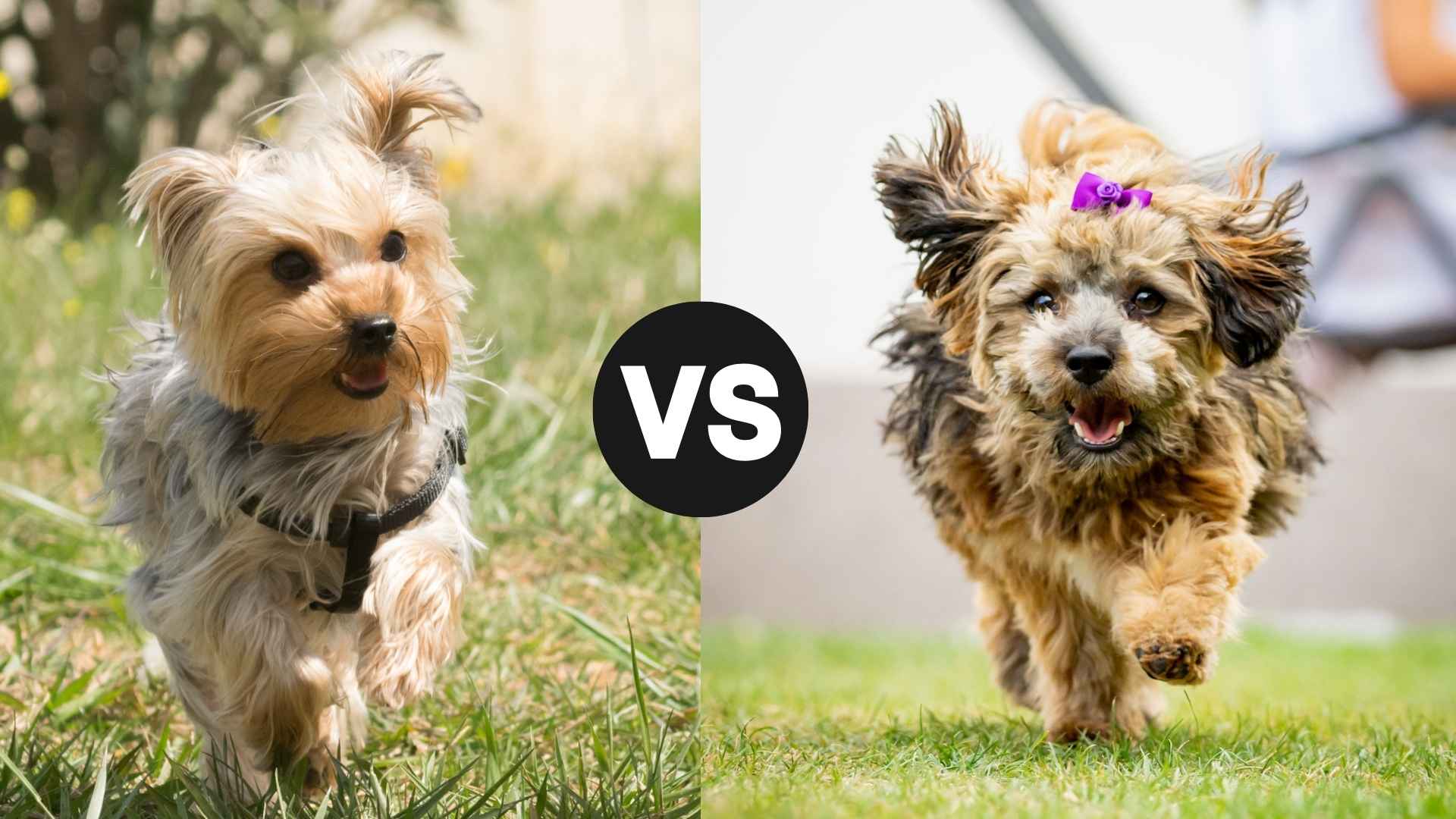Imagine walking into a room and being greeted by two bundles of joy—one with a silky coat and a royal strut, the other with a springy bounce and a heart-melting grin. That’s the Yorkshire Terrier and the Havanese for you.
Both are small in size but massive in personality, and choosing between them is no easy task. Whether you’re a fan of the feisty and fashionable Yorkie or charmed by the playful and affectionate Havanese, one thing’s certain—either pup is bound to steal the show (and your sofa).
In this friendly face-off, we’ll explore what makes this toy breed unique, from their grooming needs to their trainability, energy levels, and how well they get along with kids or other pets. Let’s find out which little canine champion is the better match for your lifestyle, home, and heart. Spoiler alert: this choice might just come down to which one wins you over with a tail wag!
Yorkshire Terrier vs. Havanese
Yorkshire Terrier vs. Havanese: Physical Dimensions and Weight
Yorkshire Terrier (Yorkie)
The Yorkshire Terrier, lovingly known as the “Yorkie,” is a small, energetic, and self-assured breed, recognized for its shiny, smooth coat and fearless temperament. According to the American Kennel Club (AKC), Yorkies are frequently regarded as the most popular dog breed in several American cities.
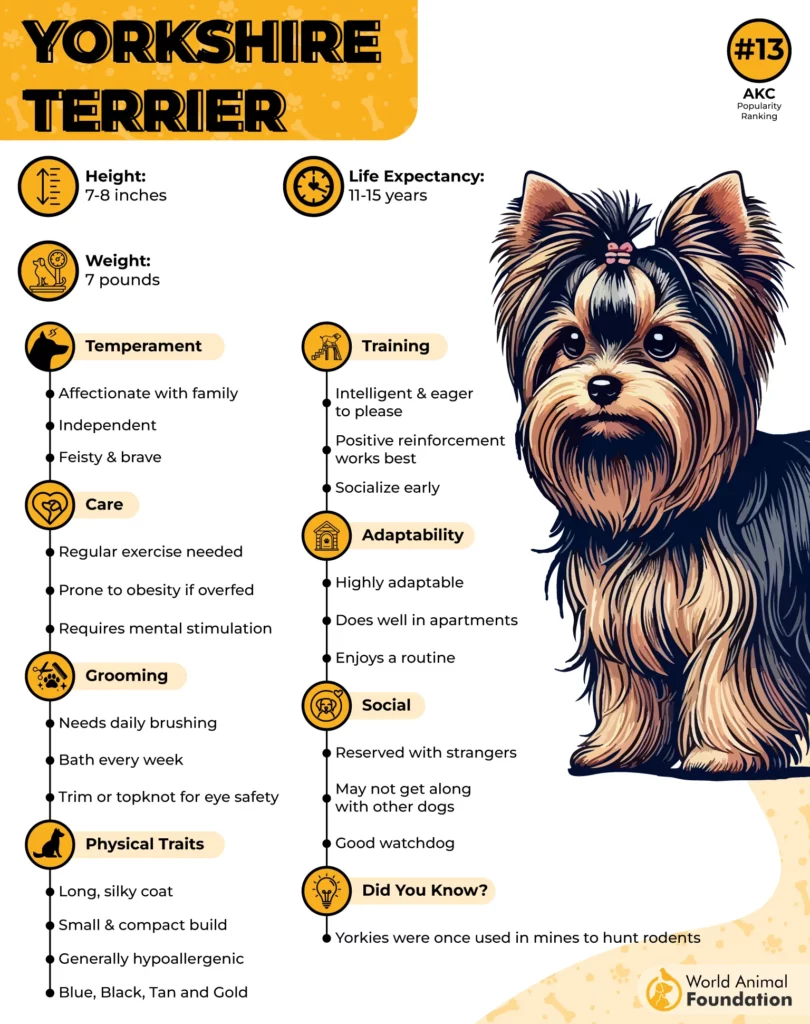
Despite its small size, the Yorkie is courageous and often carries itself with a larger-than-life attitude. It’s an excellent companion for those who enjoy a dog with a bit of spunk, and its portability makes it great for apartment living.
Height: Typically 7 to 8 inches at the shoulder.
Weight: Usually around 4 to 7 pounds.
Build: Small, compact, and slender with a fine, silky coat.
Havanese
On the other hand, the Havanese is a cheerful and affectionate dog with a gentle nature. Known for its long, flowing coat and friendly demeanor, this breed is highly social and loves being around people and other pets.
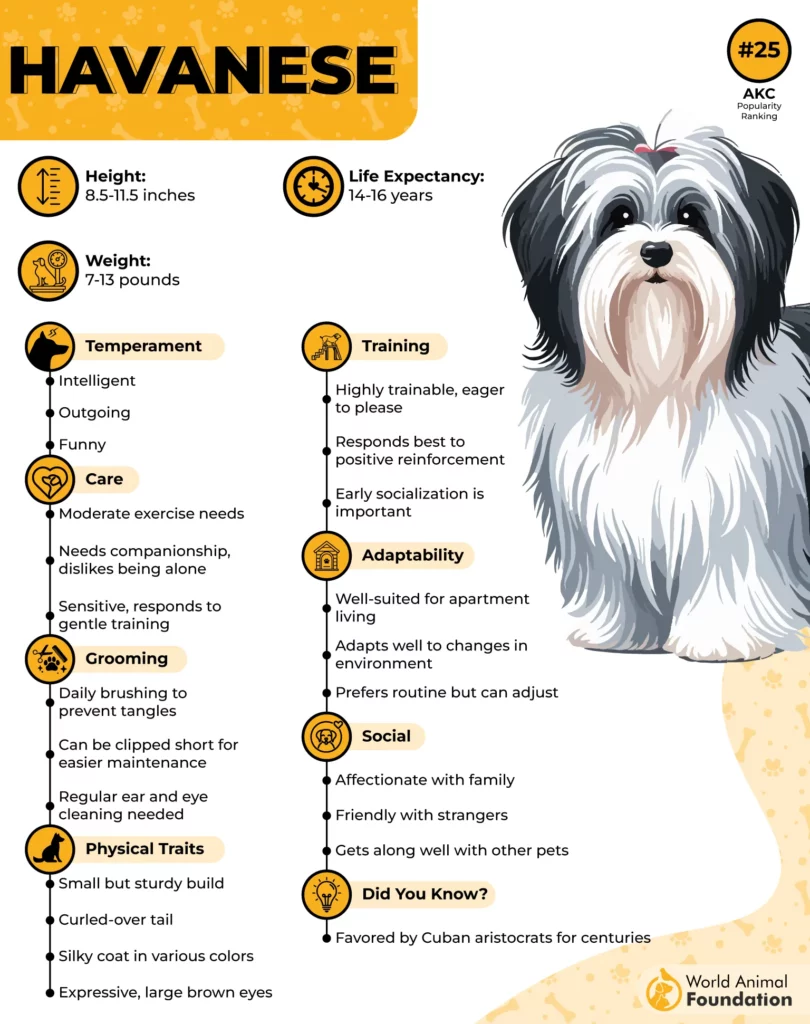
The Havanese is a little larger than the Yorkie, making it a good choice for families seeking a playful yet calm companion.
Height: Generally 8.5 to 11 inches at the shoulder.
Weight: Typically 7 to 13 pounds.
Build: Slightly larger and sturdier than the Yorkie, with a long, silky coat that often requires grooming.
Yorkshire Terrier vs. Havanese: Learning Ability and Cognitive Skills
When it comes to learning ability and cognitive skills, both the Yorkshire Terrier and the Havanese are intelligent breeds, but they differ in certain aspects:
Yorkshire Terrier
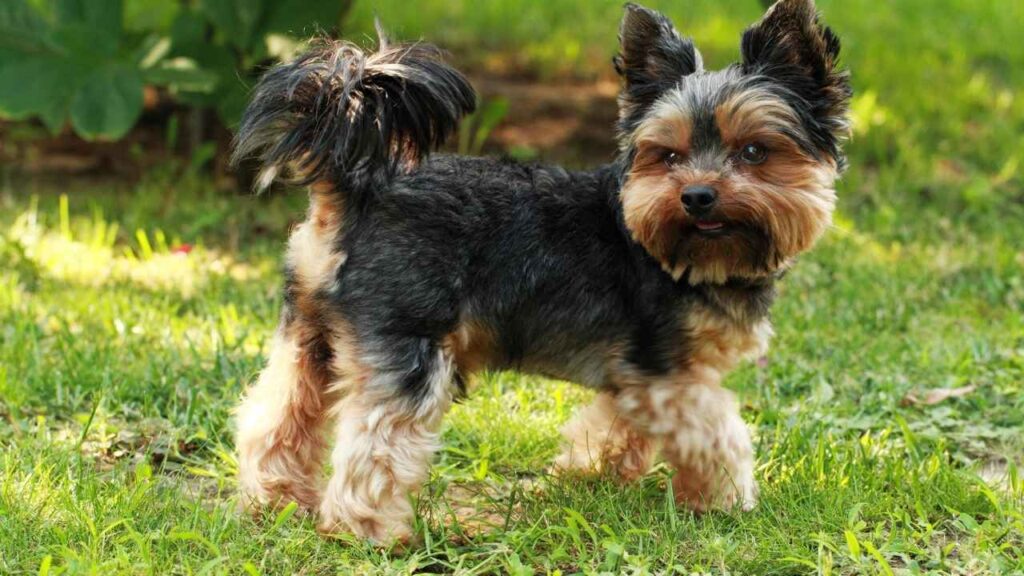
Learning Ability
Yorkies are intelligent and quick learners, but can sometimes be a bit stubborn. They may need a firm and consistent approach during training. Their determination and alertness make them great at learning tricks and commands, though they might be independent thinkers.
Cognitive Skills
Their high energy and strong instinct make them keen problem-solvers. However, they can be a bit more challenging to train due to their tendency to be independent and stubborn.
Havanese
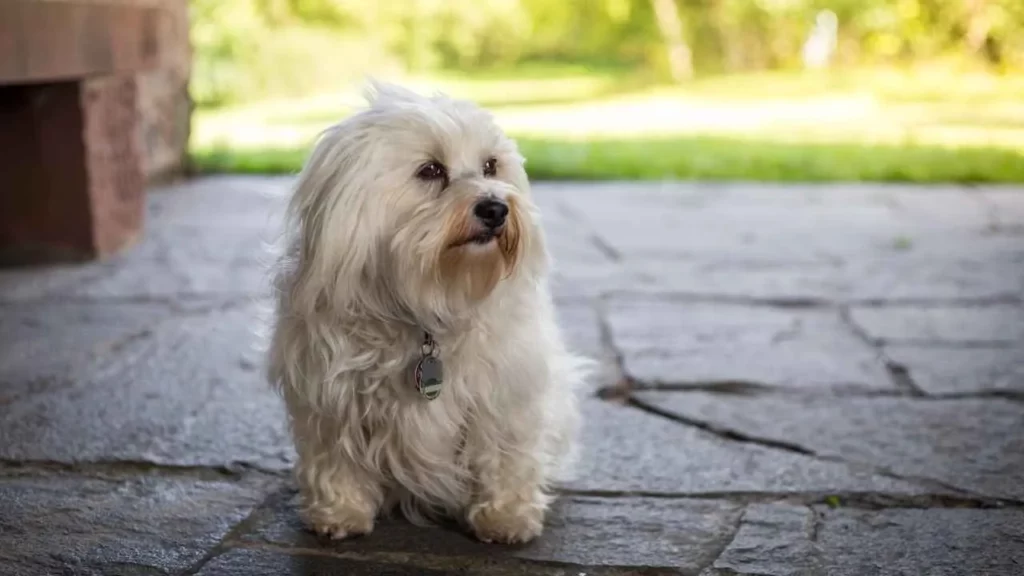
Learning Ability
The Havanese is highly trainable and eager to please, which makes it more responsive to training compared to the Yorkie. They enjoy interacting with their owners and are quick to learn new commands, especially when rewarded with praise or treats.
Cognitive Skills
This breed excels in problem-solving and adapting to new situations. Their keen social intelligence makes them great at understanding human emotions and bonding closely with their families.
While both breeds are intelligent, the Havanese is typically easier to train and more eager to please, while the Yorkshire Terrier may require a more patient and consistent training approach due to its independent nature.
Yorkshire Terrier vs. Havanese: Character Traits and Disposition
When comparing the character traits and disposition of a Yorkshire Terrier and a Havanese, here’s how they stack up:
Yorkshire Terrier
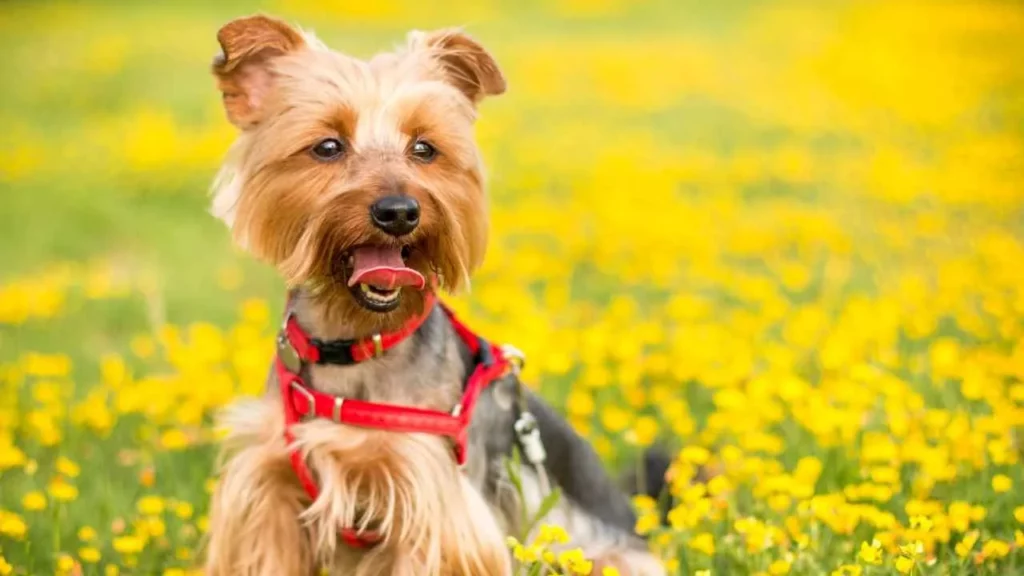
The Yorkie is confident, lively, and often described as having a “big dog” personality in a small body. They are fiercely loyal to their owners and tend to bond strongly with their families. While they can be affectionate, they are also known for being independent and may not always be as cuddly as other small breeds.
As per PetMD, the most notable physical characteristic is the Yorkie’s long, straight blue and tan hair that’s often trimmed short into a fashionable haircut.
Yorkies are alert, bold, and sometimes stubborn. They make excellent watchdogs due to their keen senses and tendency to bark at strangers. Though they can be social, they are also known to be a bit reserved with strangers and other dogs.
Havanese

The Havanese is a cheerful, friendly, and affectionate breed. They thrive on human companionship and are known for being particularly good with children and other pets. Their playful nature and adaptability make them an excellent choice for families.
According to WebMD, Havanese dogs have a double coat, which consists of two layers of fur that grow at different rates and can have varying textures.
Havanese dogs are easygoing, gentle, and sociable. They love to be the center of attention and enjoy interacting with people. Their disposition is generally calm and adaptable, making them a good fit for various living situations, from apartments to homes with yards.
In summary, both breeds make wonderful companion dogs, but their personalities differ, with the Yorkie being a little more reserved and the Havanese being notably more outgoing.
Yorkshire Terrier vs. Havanese: Energy Level and Playfulness
When comparing the energy level and playfulness of the Yorkshire Terrier and the Havanese, here’s how each breed stands out:
Yorkshire Terrier
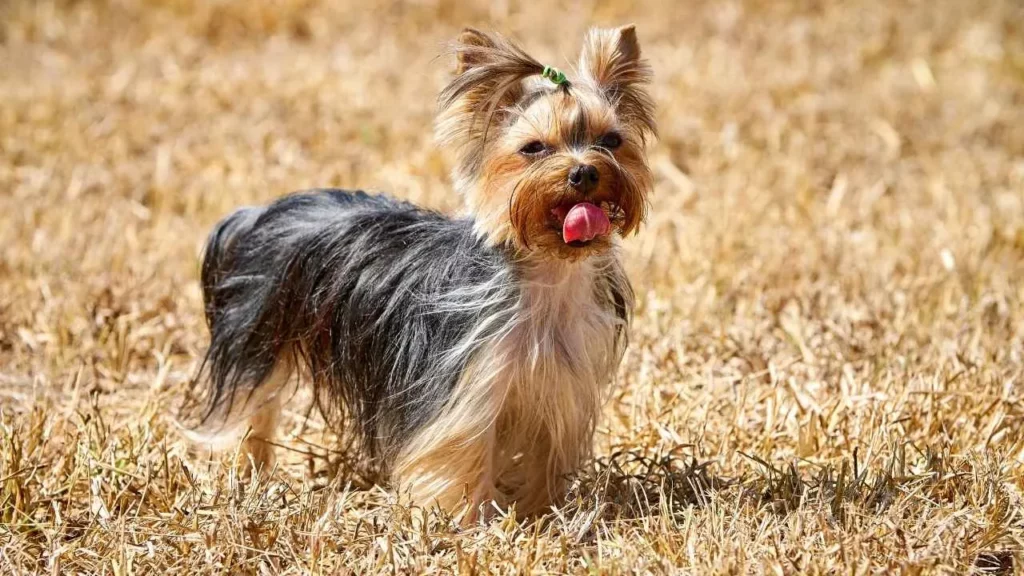
The Yorkie is an energetic and spirited breed. Despite its small size, it has a lot of stamina and loves to be active. They enjoy short bursts of intense play and outdoor activities, but can also be content with lounging around the house.
Yorkies are playful and enjoy interactive playtime, such as fetch or playing with toys. However, their playfulness can sometimes be independent, meaning they may entertain themselves if they aren’t getting enough attention. They also tend to have a strong prey drive and might engage in chase games.
Havanese

The Havanese is also an energetic toy dog, but their energy is generally more balanced. They are playful and enjoy regular activity, but they also appreciate downtime and being relaxed at home. They enjoy walks, play sessions, and social activities, but don’t require the high-intensity playtime that some other breeds do.
Havanese dogs are extremely playful and love to engage with their owners. They are often seen chasing toys, playing games, and being the life of the party. Their playful nature extends to being excellent companions for children and other pets.
Both breeds enjoy playtime and require regular exercise, but the Havanese is typically more adaptable and enjoys more consistent social play, while the Yorkie might have shorter, more intense bursts of energy.
Yorkshire Terrier vs. Havanese: Health Considerations and Longevity
Yorkshire Terrier
Yorkies come with their own set of health considerations that owners should be aware of to ensure they live a long, happy life.
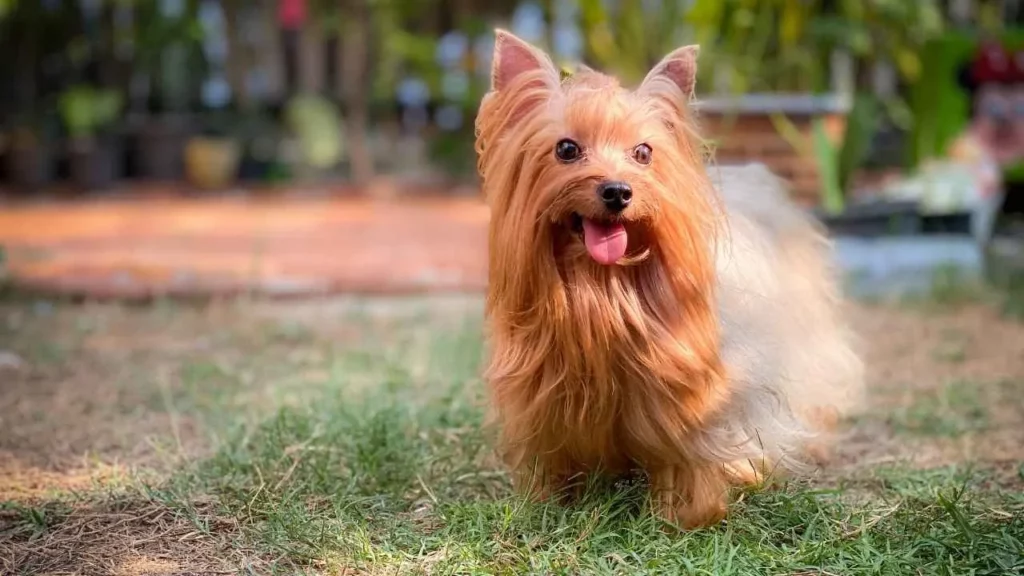
Dental Issues: Yorkies are prone to dental problems, including gum disease and tooth loss, due to their small mouths.
Tracheal Collapse: A common issue for Yorkies, especially as they age. It affects their ability to breathe properly and may require medical intervention.
Luxating Patella: This condition, where the kneecap slips out of place, is common in small breeds like Yorkies.
Hypoglycemia: Being a small breed, Yorkies are more susceptible to low blood sugar, particularly as puppies.
On average, Yorkies live between 12 to 15 years, with many reaching up to 17 years or even longer with proper care. Their lifespan is generally longer than larger dog breeds, though their health can be affected by factors like genetics, diet, and lifestyle.
Havanese
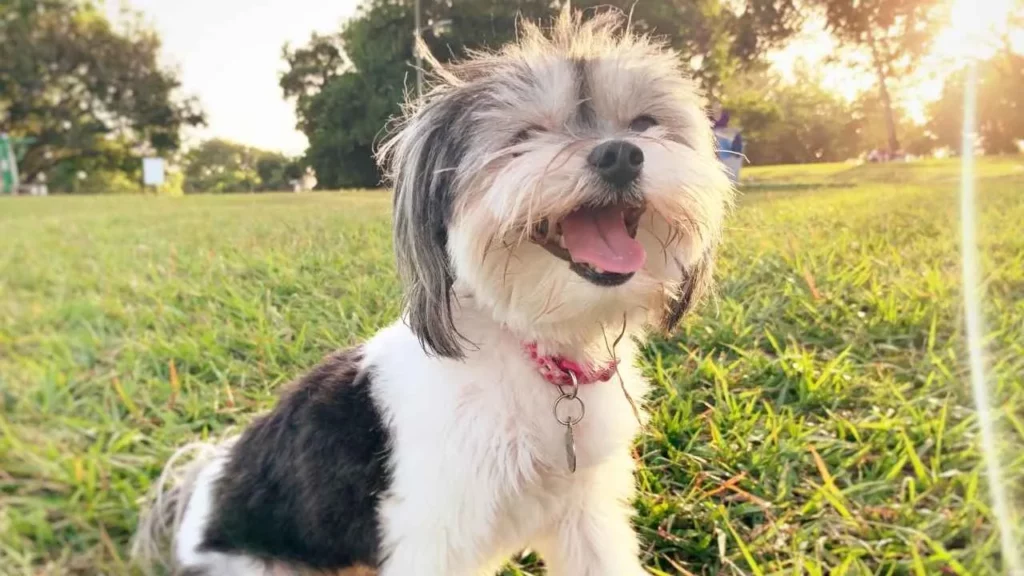
As with any dog, there are health considerations that prospective and current Havanese owners should be aware of to ensure their pets live long, healthy lives.
Hip Dysplasia: Though it’s more common in larger breeds, hip dysplasia can occur in Havanese as well. This condition involves the hip joint not developing properly, leading to pain and arthritis over time.
Eye Problems: Havanese are prone to certain eye conditions, including cataracts, progressive retinal atrophy (PRA), and dry eye. Regular vet check-ups and eye exams are important for detecting and managing these conditions early.
Patellar Luxation: Like many small breeds, Havanese can develop patellar luxation, where the kneecap slips out of place. This can cause limping and pain, and in severe cases, may require surgery.
Allergies: Havanese may suffer from food allergies or environmental allergies. Symptoms include itching, skin rashes, or digestive issues. Identifying and avoiding allergens is key to managing these issues.
Heart Disease: While not as common, some Havanese may develop heart conditions, such as mitral valve disease, which affects the heart’s ability to pump blood efficiently.
Ear Infections: Due to their long, floppy ears, Havanese are more prone to ear infections, which can be exacerbated by moisture or poor hygiene. Regular ear cleaning is essential to prevent infections.
The Havanese has a relatively long lifespan and is considered a healthy breed as compared to other small breeds, typically living between 14 to 16 years. With good care, some Havanese dogs have been known to live even longer. Their longevity is often attributed to their robust health and the attention to managing their health issues early on.
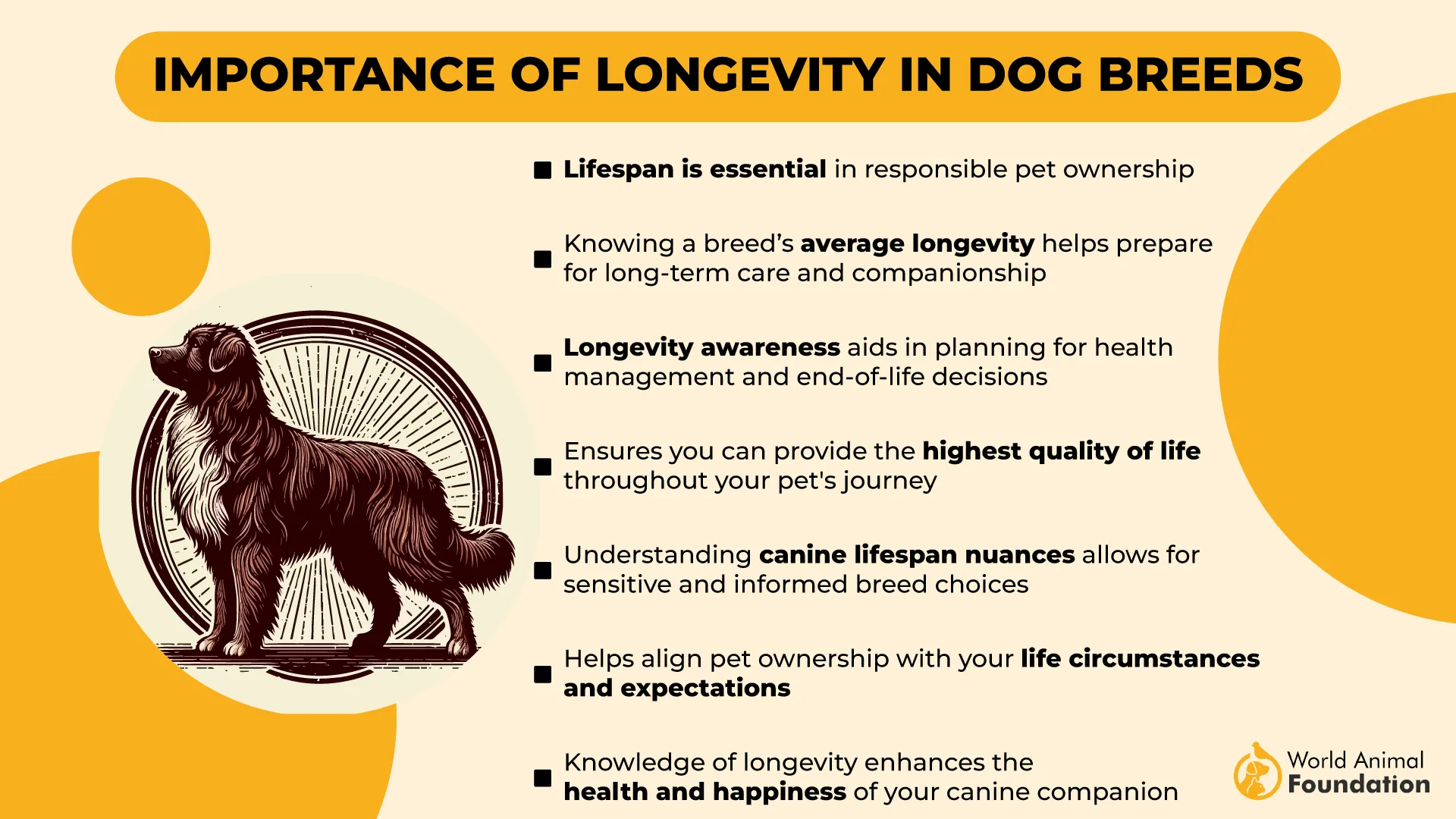
Both breeds can live long, healthy lives with proper care, but it’s important to be aware of their breed-specific health concerns and stay proactive with regular vet visits.
Conclusion
When it comes to a Yorkshire Terrier comparison with the Havanese, it can be a delightful challenge. Both breeds are known for their loving personalities, adaptability, and compact size, perfect for city apartments or cozy homes.
The Yorkie, with its bold personality and elegant coat, is ideal for someone looking for a loyal, sassy companion. On the other hand, the Havanese—sometimes affectionately called the better Bichon Habanero—offers a calm, cuddly temperament and a friendly nature, especially great for families and those with kids or other pets. Both healthy dogs are great for young age owners or first-time dog parents, thanks to their manageable size and affectionate natures.
If you’re also considering other small dog breeds, the Miniature Schnauzer brings intelligence and a slightly more active lifestyle, while the sleek and sensitive Italian Greyhound offers a quiet, graceful alternative. These two breeds, along with the Yorkie and Havanese, represent some of the best in the small dog world, each with unique charms.


